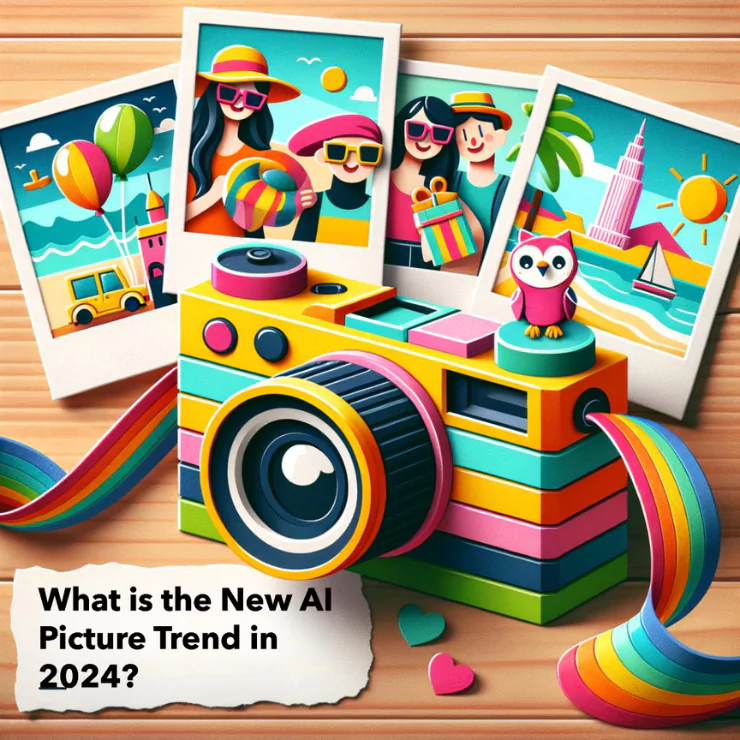
The fashion industry is one of the most competitive and ever-changing industries in the world. To keep up with the trends and improve their profit margins, fashion brands must utilize all available technology, including artificial intelligence (AI). AI can help fashion brands by providing accurate predictions of future trends, identifying potential customers, and optimizing stock levels.
In recent years, AI has started to play a bigger role in the fashion industry. Many fashion brands are already utilizing AI technology to some extent. For example, H&M uses AI-enabled sensors in its stores to track customer behavior and optimize stock levels accordingly. However, there are still many opportunities for fashion brands to improve their use of AI. By harnessing the power of AI, fashion brands can gain a competitive edge and improve their bottom line. In the future, we can expect to see more fashion brands using AI to personalize the customer experience, develop new products, and streamline their supply chains.
In this article, we will take a look at how AI can help fashion brands improve their profit margins. We will examine how AI is being used by fashion brands today and explore the potential benefits of AI in the future. By understanding how AI can help fashion brands, we can better understand the role that AI will play in the fashion industry in the years to come.
The Role of AI in the Fashion Industry
The role of AI in the fashion industry is constantly evolving. However, there are a few key areas where AI can help fashion brands improve their profit margins.
Personalized recommendations
One of the most important ways that AI can help fashion brands is by providing personalized recommendations. AI-powered recommendations are based on a customer’s past behavior and can be used to suggest similar or complementary items. For example, if a customer buys a dress from a particular brand, the AI system could suggest matching shoes or a handbag from the same brand. By providing personalized recommendations, fashion brands can encourage customers to buy more items and improve their profit margins.
Automated product design
Another way that AI can help fashion brands is by automating the product design process. AI can be used to create prototypes of new designs and test them for durability, comfort, and other factors. This can help fashion brands to save time and money on the product development process. In the future, we can expect to see more fashion brands using AI to create new designs.
Supply chain management
In addition to the above applications, AI can also help fashion brands to optimize their supply chains. AI can be used to track inventory levels, identify potential suppliers, and predict demand. By using AI to manage their supply chains, fashion brands can improve their efficiency and reduce their costs. In the future, we can expect to see more fashion brands using AI to streamline their supply chains.
AI content generation
Finally, AI can also be used to generate content. AI-generated content can be used to create product descriptions, blog posts, and social media posts. This can help fashion brands to save time and money on content creation. In the future, we can expect to see more fashion brands using AI to generate content.
Benefits of Using AI for Fashion Brands
Fashion brands can benefit from using AI in several ways.
Increased sales and profit margins
First, AI can help fashion brands to increase their sales and profit margins. By providing personalized recommendations and automated product design, fashion brands can encourage customers to buy more items. In addition, by using AI to manage their supply chains, fashion brands can reduce their costs and improve their efficiency.
Improved customer satisfaction
Second, AI can help fashion brands to improve customer satisfaction. By providing personalized recommendations, fashion brands can make it easier for customers to find the products they want. In addition, by automating the product design process, fashion brands can create better-fitting and more comfortable products.
Streamlined operations
Third, AI can help fashion brands to streamline their operations. By using AI to manage their supply chains and predict demand, fashion brands can reduce their costs and improve their efficiency.
Improved decision making
Fourth, AI can help fashion brands to make better decisions. By using AI to analyze data and identify trends, fashion brands can make more informed decisions about their products and operations.
Boost creativity
Last, AI can help fashion brands to boost creativity. By using AI to create prototypes of new designs, fashion brands can explore more design options and find new ways to stand out from the competition.
Top 5 AI technologies that can help fashion brands succeed
Fashion brands can use AI to their advantage in several ways.
AI-generated on-model images



By utilizing AI-generated on-model images, fashion brands can save time and money on booking photographers, models, studios, and post-processing. The traditional model photography process is tedious, lengthy, and expensive, ZMO.AI allows you to save all these costs and directly customize the model that suits your needs. In ZMO.AI, you can change the model’s appearance, body shape, background, and style at any time according to the scene and needs. It only takes a few minutes to generate your product on a model with your brand look, just the garment product photo, and a few minutes to generate a high-definition on-model image. Visually displaying the same garment in different styles and different body shapes with the help of ZMO.AI, while testing audience conversion, allows fashion brands to find the pop-up style for the first time; no need to wait for the factory sample logistics, directly output the on-model photos and start selling, which facilitates fashion brands to seize all business opportunities.
AI-powered chatbots
With the help of AI-powered chatbots, fashion brands can provide their customers with 24/7 customer service. These chatbots can provide recommendations, track orders, and answer common questions. Tidio is one such AI-powered chatbot that can be used by fashion brands to improve customer service. In addition, chatbots can also be used to upsell and cross-sell products. By using chatbots, fashion brands can improve customer satisfaction and increase sales.
AR/VR technology
Fashion brands can use AR/VR technology to create immersive experiences for their customers. The virtual fitting rooms can be used to collect data about customer preferences and sizes. This data can then be used to create customized clothing collections. These experiences can be used for marketing purposes or to provide customers with a virtual try-on experience. In addition, AR/VR can also be used to create virtual showrooms that allow customers to view products realistically. Zeekit is a great example of how fashion brands can use AR/VR to provide customers with a virtual fitting experience. Style.me brings the real-world shopping experience online by allowing users to shop in a realistic 3D virtual world. Customers can explore the store, try on clothes, and purchase items.
3D printing technology
Fashion brands can use 3D printing technology to create prototypes of new designs. This technology can be used to create customized clothing that is made to fit the specific measurements of each customer. In addition, 3D printing can also be used to create one-of-a-kind pieces or small batches of limited edition items that would be difficult to create with traditional manufacturing methods. BCN3D is one of the leading developers and manufacturers of 3D printing solutions in the world, helping innovators and fashion designers to create their 3D printed garments.
Data analytics
Fashion brands can use AI to track the behavior and preferences of their customers. By understanding what customers like and dislike, fashion brands can create better-targeted marketing campaigns and improve the overall customer experience. In addition, AI can also be used to identify which products are selling well and which ones are not. This information can then be used to make adjustments to the product line.
Monitoring and evaluating the results of using AI technology
Fashion brands need to monitor and evaluate the results of using AI technology. This includes tracking customer satisfaction, sales, and return on investment (ROI). In addition, fashion brands should also keep an eye on changes in customer behavior. It is also important to keep an eye on changes in the overall market share for the fashion brand in question. By monitoring and evaluating the results regularly, it will be possible to make necessary adjustments and ensure that the use of AI technology is effectively improving profit margins.
Conclusion
The future of AI in the fashion industry is looking very promising. There are many ways that fashion brands can use AI to their advantage, including using it to create better-targeted marketing campaigns, improve customer service, and increase sales. To ensure that they can effectively utilize AI technology, fashion brands need to monitor and evaluate the results regularly. By doing so, they will be able to make necessary adjustments and ensure that the use of AI technology is effectively improving profit margins.




